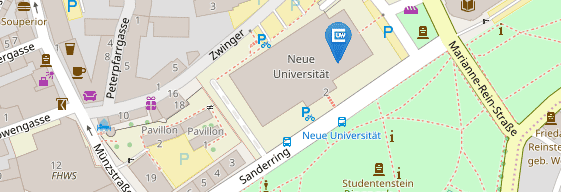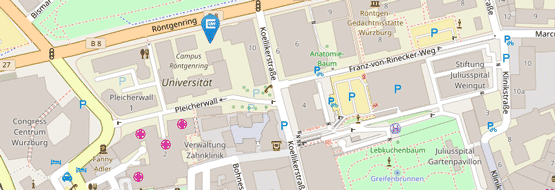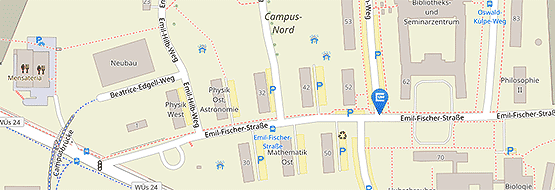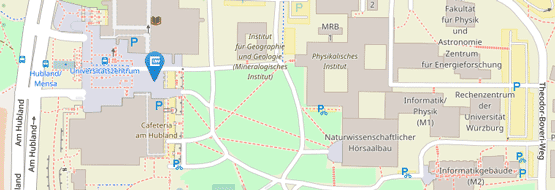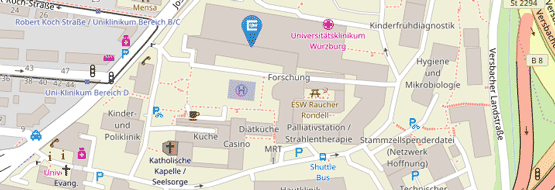Thesis Topics
Available thesis topics at the Ecological Field Station Fabrikschleichach
The Ecological Field Station, the Bavarian Forest National Park (NP BW), and the Junior Professorship for Applied Biodiversity Science offer various topics in applied ecology for Bachelor's and Master's theses - based on literature research, field or laboratory approaches. Students who would like to do a project as part of their studies are always welcome! Below you will find a selection of possible projects with brief descriptions. Each topic is supervised by a staff member (supervisor abbreviations are found at the end of the respective topics and contact information is at the bottom of the page). If a topic interests you, please contact us to find out more! Students are also welcome to suggest their own ideas.
Projects at the Ecological Field Station/Uniwald/Steigerwald/Bavarian Forest National Park:
Bachelor thesis topics:
- Bachelor or Master: Who is croaking? Monitoring amphibians with AI: Development of a model for detecting frogs via their vocalizations. Approach: Soundrecorders will be used to record amphibian calls (data are already available but additional recordings can be made), frogs will be identified to species based on their calls (no previous experience necessary, only a willingness to learn), then an AI model will be developed and validated. This project can be started at any time. (JR, WÜ)
- Bachelor or Master: Comparison of the insect community sampled by light traps and eaten by bats - how well do light traps sample the real diet of bats? Approach: Light traps will be set up in different ecosystems. Bats will be captured simultaneously using mist nets and their fecal samples will be collected. DNA from light trap samples and bat fecal samples will be extracted and sequenced, and DNA metabarcoding will be used to identify insect species in each sample type. This will reveal how well the light trap samples reflect bat diets at the same sites. Car for fieldwork is recommended. (MH, FSF)
Master's thesis topics:
-
Project 1: Does canopy openness enhance associational resistance in temperate forests? How does forest canopy structure influence the protective effects of tree neighbourhood diversity against insect herbivory? This project investigates whether increased canopy openness, created by experimental tree-cutting treatments in our university forest, modulates “associational resistance” in European beech (Fagus sylvatica). Approach: You will quantify leaf herbivory on focal trees across control and canopy gap plots, characterise tree neighbourhood diversity, and measure microclimatic variables such as light and temperature. The study combines field surveys and statistical modelling to explore key multitrophic interactions relevant to forest health and biodiversity. (SM, FSF)
-
Project 2: How do canopy openness and tree neighbourhood influence leaf traits and parasitoid pressure in European Beech? This exploratory project focuses on the chemical and ecological mechanisms underlying herbivore–enemy interactions in forest ecosystems. Approach: Using the same forest plots and focal trees as Project 1, you will analyse variation in leaf chemical traits (e.g., nitrogen content, phenolics) across canopy treatments and tree neighbourhoods. Additionally, you will collect and rear herbivorous insect larvae to assess parasitism rates, linking bottom-up leaf chemistry with top-down natural enemy effects. The project offers hands-on experience with field sampling, chemical analysis, and insect rearing, advancing understanding of multitrophic controls in forest ecosystems. (SM, FSF)
- Arthropod use of space in forests: Where do arthropods fly? Are flying arthropods using different heights of the canopy depending on the forest structure and/or canopy temperature? Where do arthropods walk? Are ground-arthropods using different vegetation structures depending on ground temperatures? Approach: You will have arthropod species data available to analyze and determine if there are community differences between canopy heights and vegetation structure. The arthropods were collected in a pilot study using window traps and pitfall traps in the Bavarian Forest. Opportunity for fieldwork in the Bavarian Forest available! (OD, NP BW)
- Do beetles decide where to go depending on the temperature during hot days? Deadwood should buffer ground temperatures; therefore, we expect to find more beetles near deadwood during hot periods of the summer compared to colder days and fewer beetles in open areas without deadwood. Approach: You can identify beetles, which were collected by pitfall traps in microhabitats with and without deadwood, to measure if a) temperatures are indeed lower next to deadwood during a heatwave; b) if beetles use microhabitats near deadwood during a heatwave. Opportunity for fieldwork in the Bavarian Forest available! (OD, NP BW)
Projects at the Junior Professorship for Applied Biodiversity Science:
Bachelor thesis topics:
- Multidiversity on bark beetle disturbance sites in the Bavarian Forest: Do bark beetle disturbance sites have a positive influence on the diversity of various taxa? Is diversity influenced by the management of the disturbance sites? Methods: Data from various taxa (metabarcoding data from flight window traps, fungal data, data on mosses and lichens) are already available for analysis. Additional data (moths from light traps, beetles/spiders from pitfall traps) can be analyzed to expand one's own taxonomic knowledge. (BU, WÜ)
- Increasing fungal diversity through enrichment of various deadwood objects - Is the enrichment of deadwood more effective in promoting diversity when different types of deadwood objects are introduced? Methods: Fungal data were collected in the Bavarian Forest on experimentally designed sites. Data analysis using R and extensive literature research. Visiting the sites in the Bavarian Forest is possible and can be discussed. (BU, WÜ, NP BW)
- Promoting threatened mosses and lichens through different deadwood types - What characteristics must deadwood have to best promote the diversity of mosses and lichens? Methods: Data on mosses and lichens were collected in 2022 in the Bavarian Forest on experimentally established plots and are already available. Evaluation of the available data with R. Visiting the plots in the Bavarian Forest is possible and can be discussed. (BU, WÜ, NP BW)
- Recolonization of mown grasslands - grasshoppers are often damaged during the mowing of grasslands but they are also very mobile and can evade mowing machines if they are driving slowly. After the mowing event, grasshoppers are often found on the short vegetation. Methods: Capture and marking of grasshoppers before a mowing event, recapture or observation of the same animals in mown and unmown vegetation. (NS, WÜ)
Master's thesis topics:
- Which arthropods overwinter on artificially created flowering areas in urban areas? Methods: Flowering areas were created and developed over two years. Dead stems of various plants were collected in the spring. The stems should be examined and the taxa found on/in them are to be identified. (BU, WÜ)
- Which insects overwinter in old grass or herbacous vegetation? Within the project UrbanPArt, we sampled the vegetation of the previous year to search for larvae and eggs on and within the vegetation. Methods: Checking of the samples and identification of eggs or larvae. Additional sampling in late summer or autumn. (NS, WÜ)
Abbreviations and contact links:
BU: Dr. Britta Uhl
JR: Julia Rothacher
OD: Dr. Orsolya Decker (Bavarian Forest National Park - orsolya.decker@npv-bw.bayern.de)
Locations:
FSF: Ecological Station Fabrikschleichach
NP BW: Nationalpark Bayerischer Wald
WÜ: Würzburg



